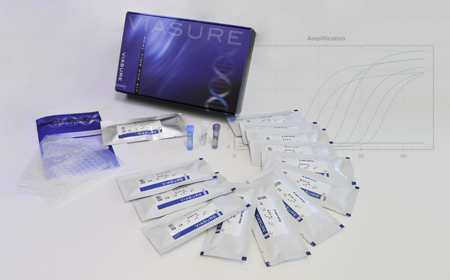
VIASURE Real Time PCR Detection Kits
Japanese Encephalitis Virus

Description
VIASURE Japanese encephalitis virus Real Time PCR Detection Kit is designed for detection of Japanese encephalitis virus in blood or CSF from patients with signs and symptoms of Japanese encephalitis virus infection.
This test is intended for use as an aid in the diagnosis of the Japanese encephalitis virus in combination with clinical and epidemiological risk factors.
RNA is extracted from specimens, amplified using RT-PCR and detected using fluorescent reporter dye probes specific for Japanese encephalitis virus.
Specifications
Information
Japanese encephalitis (JE) virus, a flavivirus, is closely related to West Nile and St. Louis encephalitis viruses. JE virus is transmitted to humans through the bite of infected Culex species mosquitoes, particularly Culex tritaeniorhynchus.
Humans can be infected when bitten by an infected mosquito. The virus is maintained in a cycle between mosquitoes and vertebrate hosts, primarily pigs and wading birds. Humans are incidental or dead-end hosts, because they usually do not develop high enough concentrations of JE virus in their bloodstreams to infect feeding mosquitoes. Most human infections are asymptomatic or result in only mild symptoms. However, a small percentage of infected persons develop inflammation of the brain (encephalitis), with symptoms including sudden onset of headache, high fever, disorientation, coma, tremors and convulsions. There is no specific treatment for JE.
The diagnosis of Japanese encephalitis infection relies on the detection of specific IgM antibodies which are present in cerebrospinal fluid (CSF) and serum specimens from patients after 4-7 days post onset clinical symptoms. The viremia is very short and limited to the early phase of the disease. Viral direct detection by RT-PCR could be performed on blood or CSF in early stage of the disease and on cerebral biopsies from deceased patients.
